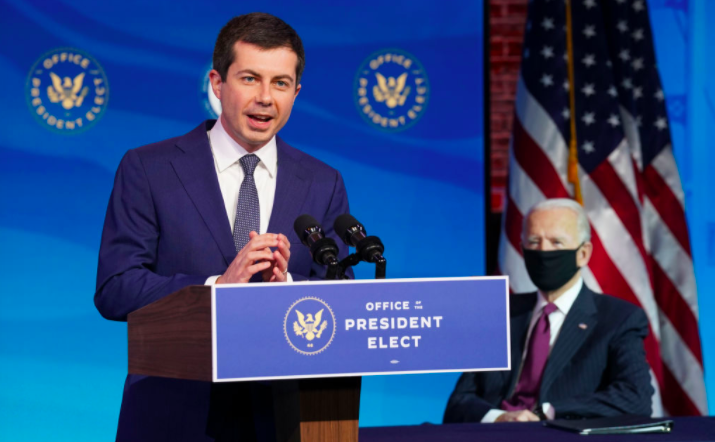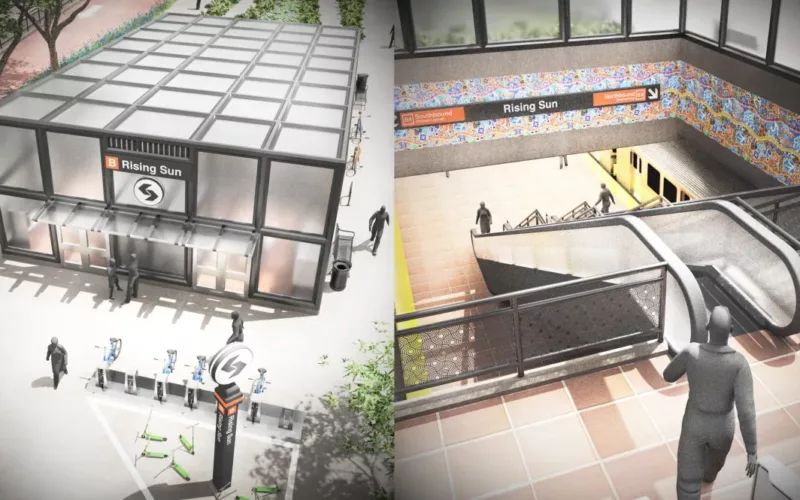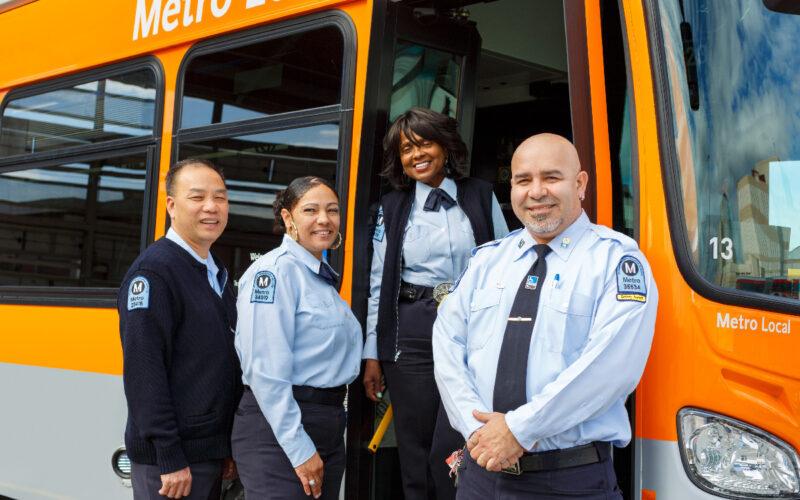
When it comes to federal priorities, transportation has often been near the bottom. The federal Transportation Secretary comes near the back of the line of presidential succession, and the position has been treated by some administrations as an opportunity to add political or regional diversity to the Cabinet.
The Biden-Harris administration has taken a different approach. In its communications, it has framed the U.S. Department of Transportation as a critical part of White House efforts to tackle climate change. Secretary Pete Buttigieg has made more media appearances than any other Cabinet member (including the first live appearances by any Transportation Secretary on late-night television). At a May forum in Ohio, Vice President Kamala Harris highlighted the need to fix sidewalks, and the importance of running frequent bus service, so that missing the bus wouldn’t mean being an hour late to work.
There are promising policy signs as well. Several reform-minded local leaders have been appointed to USDOT, including Polly Trottenberg and Meera Joshi from New York, Minneapolis’s Robin Hutcheson, and Portland’s Irene Marion. The Federal Highway Administration ordered a pause on a highway project in Houston that would worsen air quality and displace thousands of people in predominantly Black neighborhoods. And the White House issued sweeping executive orders calling for a “whole of government equity agenda” and a “government-wide” approach to climate change.
How will we know whether these actions are resulting in structural change within USDOT? At a TransitCenter event last month, panelists highlighted several signals to watch for.
Strong coordination between USDOT and other agencies like Housing and Urban Development and the Environmental Protection Agency holds tremendous promise — if it is pursued beyond a surface-level gloss. Transportation for America’s Beth Osborne, a veteran of USDOT during the Obama administration, warned that when she was in the federal government, much “interagency coordination” lacked clear objectives. She suggested that DOT, HUD, and EPA could coordinate anti-displacement and affordable housing initiatives with grants to take down highways and reconnect communities. Another area where collaboration could help is replacing outdated transportation models that sometimes claim highway expansion will reduce greenhouse gas emissions, and that don’t effectively model induced demand on highways and the land use benefits of transit.
HUD’s “affirmatively furthering fair housing” rule could be expanded to include transportation, suggested Urban Institute researcher Yonah Freemark, and regional transportation plans developed by metropolitan planning organizations could be required to include housing goals.
Federal rules and standards have huge import for local transportation projects. As TransitCenter recently warned, draft revisions to the Manual on Uniform Traffic Control Devices could make it more difficult for cities to build bus lanes. Another standard that matters is federal guidance on how transit agencies should apply Title VI of the 1964 Civil Rights Act to fare and service changes. The “tri-annual review,” an audit that USDOT conducts of entities that receive federal transit and highway grants, is a chance to educate state and local governments on federal priorities, noted Stephanie Gidigbi Jenkins, who served in the Obama DOT and currently directs policy and partnerships for NRDC’s Healthy People + Thriving Communities Program.
Although most federal transportation funding is sent to states and transit agencies via formula, the discretionary programs controlled by USDOT can play a large role in shaping local priorities. “For better or worse, the Obama administration used its TIGER program to get cities across the country to invest in streetcars,” Freemark pointed out. The current administration can set its own signal when it awards grants from the re-branded “RAISE” and “INFRA” programs later this year.
Much of the Biden transportation agenda relies on Congress. The American Jobs Plan, the administration’s infrastructure proposal, has been described as separate from the five-year surface transportation reauthorization, and the policy in both bills matters. Legislative efforts should be coordinated with each other and with internal policy changes at USDOT. “It’s not enough to do cool things over here, while doing the same thing we always did over there,” said Osborne.
Gidigbi Jenkins and Freemark both cited transit operating support as a policy change that could be potentially transformational. They also highlighted the need to change the culture at state departments of transportation, so that–if there is a large increase in rail and transit funding–states have the skills and capacities to help administer those funds.
Key to implementing reforms at USDOT will be career staff at the agency. “I learned very early on that if you wanted projects to live on, that you would have to make friends with the career staff to ensure continuity of government,” said Gidigbi Jenkins. “Over these last four years under the Trump administration, they were able to hold the line in ways that I am so incredibly grateful for.” She pointed out that USDOT currently has hundreds of vacancies for career positions–a great opportunity for reformers interested in the long haul.
 To Achieve Justice and Climate Outcomes, Fund These Transit Capital Projects
To Achieve Justice and Climate Outcomes, Fund These Transit Capital Projects
Transit advocates, organizers, and riders are calling on local and state agencies along with the USDOT to advance projects designed to improve the mobility of Black and Brown individuals at a time when there is unprecedented funding and an equitable framework to transform transportation infrastructure, support the climate, and right historic injustices.
Read More New Drug Testing Rule from USDOT Could Help Alleviate the Bus Operator Crisis
New Drug Testing Rule from USDOT Could Help Alleviate the Bus Operator Crisis
New drug testing rules from the USDOT could make it easier for transit agencies to recruit more operators - but only if they implement the rule.
Read More